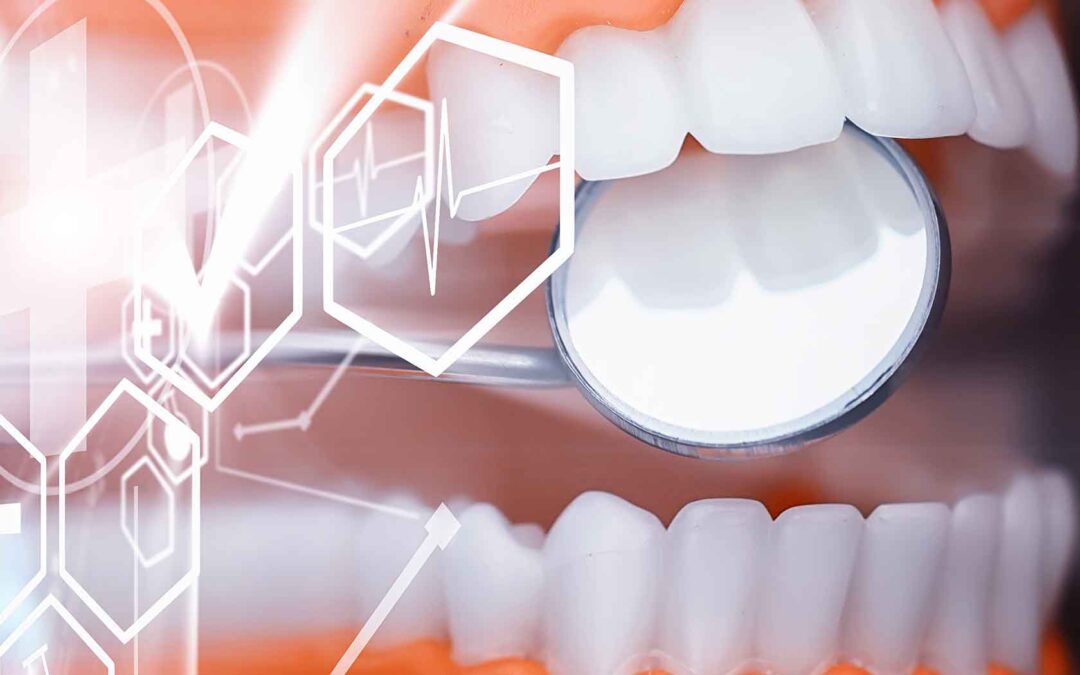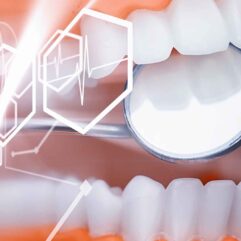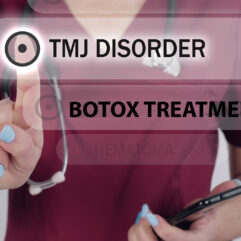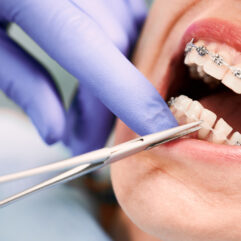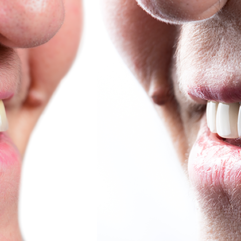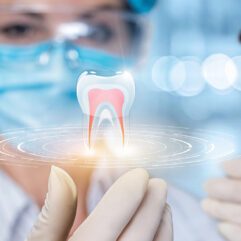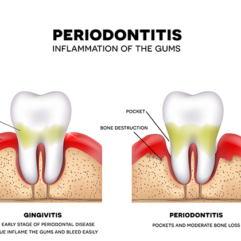Evolution of All-on-x in Dental Implantology Technology
Advancements and Innovations in Full-Arch Prosthetics
The field of dental implantology has been transformed by All-on-x technology, which offers patients a fixed full-arch prosthesis in a few visits. When performed by a skilled implantologist, this technique enables immediate function and aesthetics, greatly enhancing the quality of life for individuals with missing or failing teeth, also known as edentulous.
In the blog post, we aimed to break down complex technical terms into more straightforward language that anyone can understand. Despite the overwhelming amount of information online, we’re here to guide you through it and help you grasp it so you can make well-informed decisions.
The All-on-4 procedure has transformed the field of implant dentistry, offering a revolutionary solution for full-arch restorations. This innovative approach traces its roots back to the fixed complete denture introduced by Dr. George Zarb in 1987. Dr. Zarb’s groundbreaking work laid the foundation for advancements in implant techniques, leading to the development of the All-on-4 concept.
Over the years, this procedure has evolved and refined, offering patients a reliable and efficient option for restoring their smiles with fewer implants and shorter treatment times. From its origins with Dr. Zarb to its current state, the All-on-x procedure revolutionizes how dental professionals approach full-arch restorations.
The latest advancements in technology and materials have significantly enhanced the effectiveness and durability of All-on-4 prosthetics. Computer-aided design and manufacturing (CAD/CAM) technology is now commonly utilized to create precise and customized prostheses, ensuring optimal fit and function.
High-strength materials such as zirconia and titanium are frequently chosen for their durability and longevity, providing patients with prosthetics that can withstand the demands of daily use.
Additionally, digital imaging and 3D printing advancements have streamlined the prosthetic design process, allowing for faster turnaround times and improved accuracy in creating prostheses that replicate the natural appearance of teeth and gums. These cutting-edge technologies and materials are revolutionizing the field of implant dentistry, offering patients with All-on-4 prosthetics superior outcomes in terms of aesthetics, function, and longevity.
Hybrid Dentures vs. Traditional All-on-4 Dentures
When choosing between hybrid dentures and traditional All-on-4 dentures, there are several factors to consider. Hybrid dentures are typically a combination of dental implants and dentures, providing a more natural look and feel than traditional dentures. They are usually more stable and secure in the mouth, allowing for better eating and speaking functionality. On the other hand, traditional All-on-4 dentures involve attaching a fixed denture to four dental implants, offering a more cost-effective solution for complete mouth restoration. While both options have pros and cons, consulting with a dentist or prosthodontist can help determine which option best suits individual needs and preferences.
Like traditional dentures, hybrid implant-supported dentures replace a complete set of upper or lower teeth with an aesthetically pleasing prosthetic that fits over the gums. However, while conventional dentures sit freely on the gums and can be easily removed, hybrid dentures are held securely with several dental implants. They can only be removed by a dentist.
Dental implants make hybrid dentures more expensive than traditional ones but offer more stability. Fixed hybrid dentures restore the mouth to its full function, so you can eat whatever you want and never have to worry about your dentures slipping out or sliding around and becoming uncomfortable.
Hybrid implant-supported dentures are more stable and secure than traditional dentures. They are fixed in place using dental implants, which makes them harder to remove and more expensive. However, they offer better functionality and prevent issues like denture slipping. Additionally, hybrid dentures can help stimulate the jaw bone, preventing bone loss and changes to facial shape over time. With proper care, they can last a lifetime compared to traditional dentures, which typically last about seven years. Hybrid dentures are made with porcelain, providing a beautiful and natural appearance.
What Is a Fixed Complete Denture?
The term “fixed complete denture” was the first term used to describe implant-supported dentures, also known as implant-supported fixed prostheses, which represent a significant advancement in modern dentistry for patients seeking a more stable and permanent solution for missing teeth.
Dr. George Zarb introduced the concept of the “Toronto Bridge” technique for fixed complete dentures in 1987. This technique involves using multiple implants to support an entire arch of teeth, providing a stable and durable solution for patients who have lost all of their teeth. The Toronto Bridge technique allows for fabricating a fixed prosthesis that closely resembles natural teeth in appearance and function. It has become a popular and successful treatment option for edentulous patients seeking a permanent solution to tooth loss, eliminating the need for adhesives and improving speaking and chewing stability.
With an implant-supported denture, patients can enjoy the confidence of a complete smile without the worry of slippage or discomfort commonly associated with traditional dentures. This comprehensive restorative option offers a long-term solution that enhances the patient’s dentition’s aesthetic appearance and functionality, ultimately improving their overall oral health and quality of life.
What Material Was Initially Used for the Fixed Complete Dentures?
The original material used for fixed complete dentures was acrylic resin. Acrylic resin is a durable and lightweight material that can be easily shaped and colored to resemble natural teeth. It was commonly used to fabricate fixed dentures before introducing newer materials, such as porcelain or zirconia, which offer improved esthetics, durability, and longevity.
Advantages
This option is favored for its affordability in creating the prosthesis. Furthermore, repairs are cost-effective and can be promptly carried out using repair resin directly at the chairside. This ensures minimal impact on the patient’s daily routine, as the denture does not need to be sent to a laboratory for repair.
Disadvantages
Despite its cost-effectiveness, there are notable drawbacks associated with this type of prosthesis. Acrylic material’s strength relies on its thickness, requiring a minimum of 12-15 mm of restorative space from the bone to the occlusal plane for optimal durability. Inadequate space poses a risk of fracture during use. Moreover, acrylic wears down faster than porcelain or natural teeth, especially when in contact with them. This accelerated wear can lead to diminished chewing efficiency, aesthetic concerns, and decreased the patient’s vertical dimension of occlusion if left unaddressed.
Alternatives like using porcelain denture teeth or incorporating metal islands and occlusal rests in the posterior regions can be considered to address these issues. However, these options may raise the cost of the final restoration and potentially compromise the aesthetic appeal of the prosthesis due to the presence of metal components.
Metal Framework with Individual Porcelain Crowns
Metal frames with individual porcelain crowns involve using a metal framework incorporating individual crown preparations. These crown preparations are then separately created and attached to the framework by the dental laboratory. Subsequently, the completed restoration is provided to the patient as a unified and cohesive unit.
Advantages
This restoration, featuring individually cemented crowns, offers a more natural appearance without needing implants to be precisely aligned in tooth positions. Notably, using porcelain contributes to enhanced esthetics, with properties such as reduced staining and improved translucency. Furthermore, porcelain provides superior load-bearing capabilities compared to acrylic, preserving the vertical dimension of occlusion.
Disadvantages
Despite the aesthetic benefits, there is an elevated risk of fracture associated with this type of restoration due to the possibility of porcelain chipping, developing craze lines, or cracking. These issues can lead to higher repair costs and increased complexity.
However, as the crowns are manufactured and affixed individually to the framework, the potential for repair and associated expenses is significantly minimized. In the event of damage, the affected crown can be easily replaced using traditional crown and bridge materials and methods. Additionally, by utilizing digital CAD-CAM techniques for designing the initial prosthesis, the clinician and patient experience can be further streamlined. This approach allows for the efficient fabrication and same-day delivery of a new crown based on the initial STL design file, reducing inconvenience for the patient during their visit.
Zirconia Framework with Porcelain Overlay
In this full arch fixed restorative option, a zirconia framework is made with porcelain laid on top.
Advantages
Compared to metal as a framework, zirconia offers several benefits, including biocompatibility, excellent aesthetics, and strength. The white color of zirconia eliminates any metal show-through under porcelain, enhancing the overall cosmetic appeal. Moreover, zirconia is known for its exceptional durability and strength. When porcelain is layered over the zirconia framework, it provides translucency and further enhances aesthetics.
Disadvantages
The main drawback of this option is associated with the properties of porcelain. Since the porcelain is processed onto the framework as a single unit, any chipping or fracturing requires the entire prosthesis to be removed, sent to the lab, and redone. This can be inconvenient for the clinician and costly for the patient, as it involves temporization and multiple visits to the dental clinic.
To reduce this risk, the zirconia framework can be designed to support the cementation of individual porcelain crowns. This simplifies repairing a chipped crown, as outlined in the section above.
Full Contour Zirconia (no porcelain)
In this prosthetic choice, strength is optimized by utilizing a full contour zirconia restoration crafted from a single block of zirconia. The zirconia is custom-stained to mimic enamel and gum tissues, enhancing its aesthetic appeal.
Advantages
This material boasts exceptional strength and durability, offering minimal wear and a low risk of chipping or craze lines.
Disadvantages
Unfortunately, the reduced translucency of zirconia can impact the aesthetics of the prosthesis. There is also a possibility of a catastrophic framework fracture, where the prosthesis would need a complete replacement, leading to additional costs and time for both the clinician and the patient.
In a catastrophic fracture, the prosthesis must be entirely remade. However, as it is a CAD-CAM restoration, the lab can utilize the original STL design file to expedite the remilling process. This helps minimize the patient’s time without their prosthesis. Furthermore, the framework can be customized to leverage the strength of zirconia while enhancing aesthetics. For instance, the posterior part of the full arch framework could be made of full-contour zirconia, with individual porcelain anterior crowns added for improved cosmetic results.
Multiple Implant-supported Bridges
An alternative method for restoring a complete arch with a fixed prosthetic involves utilizing traditional porcelain-fused-to-metal (PFM) bridges supported by implants as abutments.
Advantages
This approach is familiar to dentists as it follows a similar procedure to crown and bridge treatments for patients with natural teeth. The breaks in the midline and other areas in the arch contribute to a more natural aesthetic appearance. Moreover, if a porcelain fracture occurs, it can be replaced relatively easily without affecting the entire arch.
Disadvantages
This method necessitates at least two precisely positioned implants for every three to four-unit bridge, unlike the “All-on-4” approach, which uses four implants for full arch restorations. As a result, the costs are higher. For instance, if three bridges are to be placed in the mandible (#47-44, #43-33, #33-37), at least six implants will be needed. Additional bone grafting may also be required during implant placement.
The traditional “All-on-4” method places implants in the anterior region to optimize bone availability and reduce risks associated with vital structures in the posterior regions. A single-unit prosthesis is achieved with posterior cantilevers on both sides. The multiple bridge prosthetic approach involves implant placement in both anterior and posterior regions, requiring more expertise, precision, and adequate bone volume. Furthermore, delivering several PFM bridges can be challenging due to multiple contact points that necessitate adjustments for an ideal fit, potentially complicating the achievement of passive prosthesis fitting.
Who is a Good Candidate for Hybrid Dentures?
Deciding to have teeth removed can be a tough decision, especially for those dealing with declining oral health. If ongoing teeth issues affect your quality of life, hybrid dentures could be a great solution to improve your dental health. While older adults are more likely to need hybrid implant-supported dentures, individuals with significant tooth loss of any age may be eligible. However, it is essential to have healthy bone and gum tissue to ensure successful fusion of the implants. Certain habits and health conditions, such as smoking and osteoporosis, can impact the healing process and potentially affect the success of the implants. If you are considering getting hybrid dentures, it is best to consult a dentist to determine your suitability.
In Closing
In closing, all treatment options, except for traditional crown and bridge abutments, offer the benefit of being a single unit for enhanced strength and stability of both the implants and restorations. However, if the framework fractures, the prosthesis may need to be removed and potentially remade, causing inconvenience for the patient.
It is crucial to consider the patient’s opposing teeth when selecting materials for the final restoration. While zirconia is strong and causes minimal wear, it can lead to increased wear of acrylic restorations when opposed to them.
During the treatment planning stage, it is essential to carefully evaluate the pros and cons of each option to achieve the best possible outcome for the patient. The dentist should consider the patient’s specific needs and discuss the various options to ensure long-term success and patient satisfaction.
If you are considering All-on-x technology for your dental needs, look no further than our two dental clinics in Mexico. With the latest advancements in full-arch prosthetics and special packages currently available, we are dedicated to providing our patients with top-quality care and innovative solutions for their dental implant needs; follow this link.

